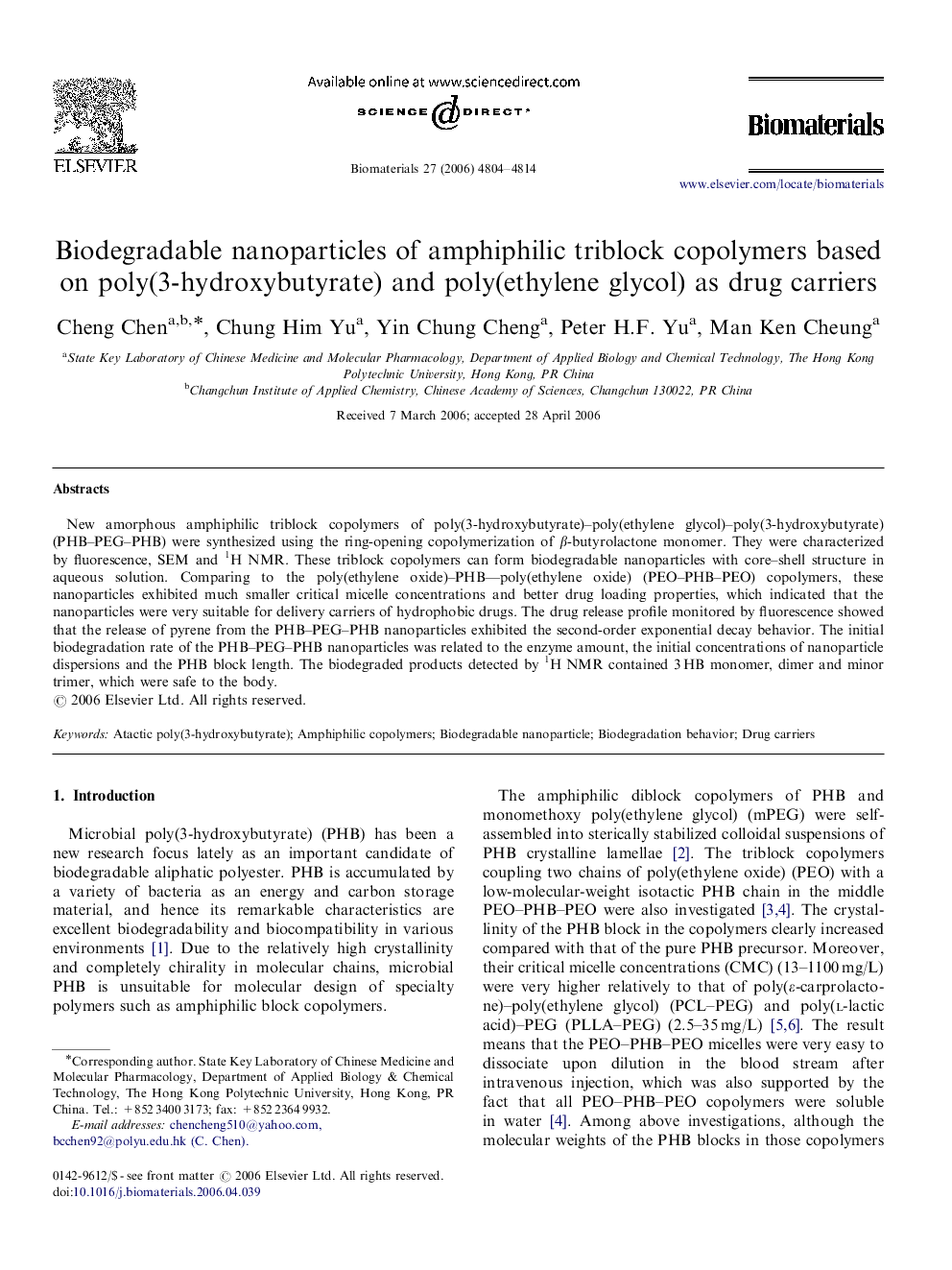| Article ID | Journal | Published Year | Pages | File Type |
|---|---|---|---|---|
| 11322 | Biomaterials | 2006 | 11 Pages |
sNew amorphous amphiphilic triblock copolymers of poly(3-hydroxybutyrate)–poly(ethylene glycol)–poly(3-hydroxybutyrate) (PHB–PEG–PHB) were synthesized using the ring-opening copolymerization of β-butyrolactone monomer. They were characterized by fluorescence, SEM and 1H NMR. These triblock copolymers can form biodegradable nanoparticles with core–shell structure in aqueous solution. Comparing to the poly(ethylene oxide)–PHB—poly(ethylene oxide) (PEO–PHB–PEO) copolymers, these nanoparticles exhibited much smaller critical micelle concentrations and better drug loading properties, which indicated that the nanoparticles were very suitable for delivery carriers of hydrophobic drugs. The drug release profile monitored by fluorescence showed that the release of pyrene from the PHB–PEG–PHB nanoparticles exhibited the second-order exponential decay behavior. The initial biodegradation rate of the PHB–PEG–PHB nanoparticles was related to the enzyme amount, the initial concentrations of nanoparticle dispersions and the PHB block length. The biodegraded products detected by 1H NMR contained 3 HB monomer, dimer and minor trimer, which were safe to the body.
